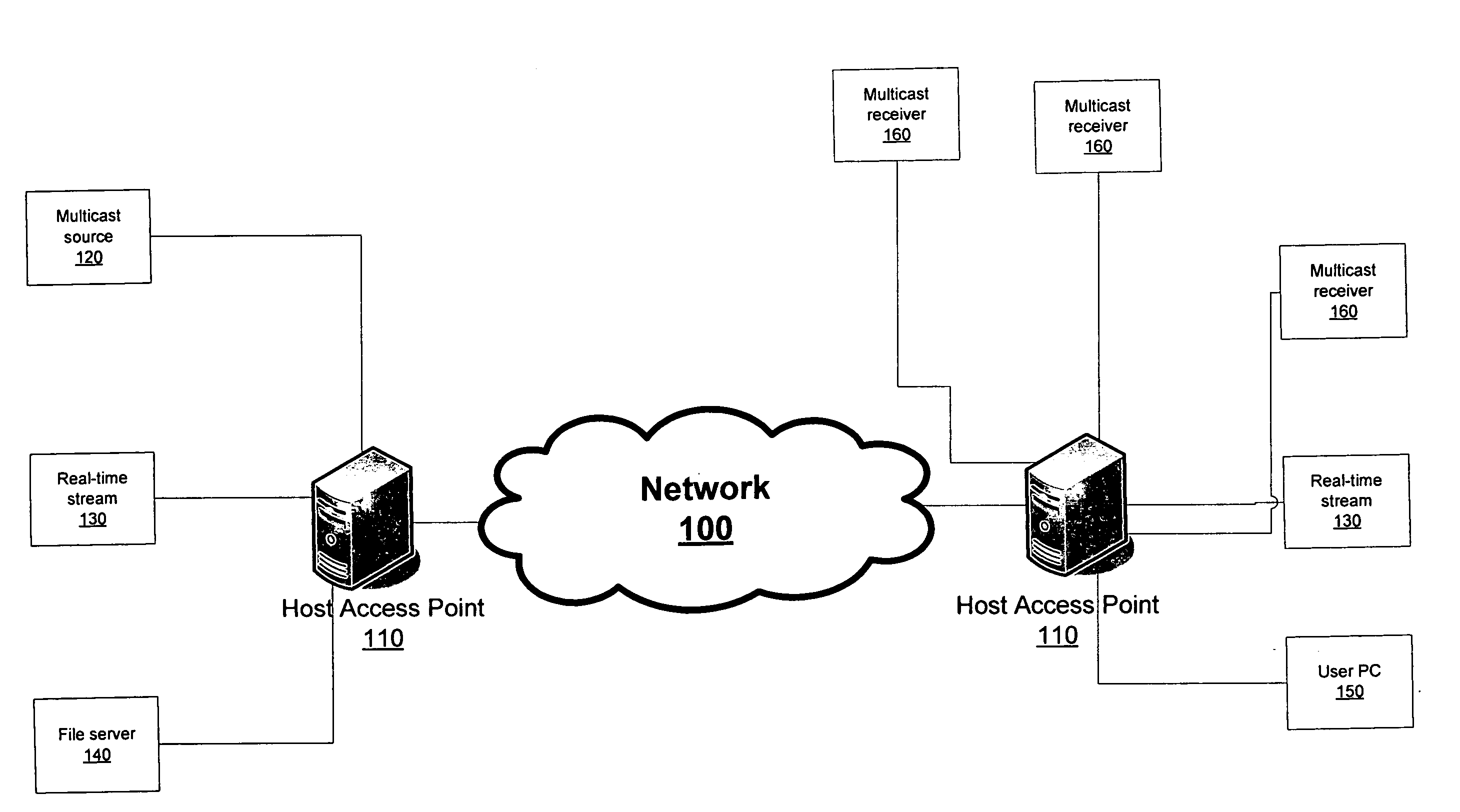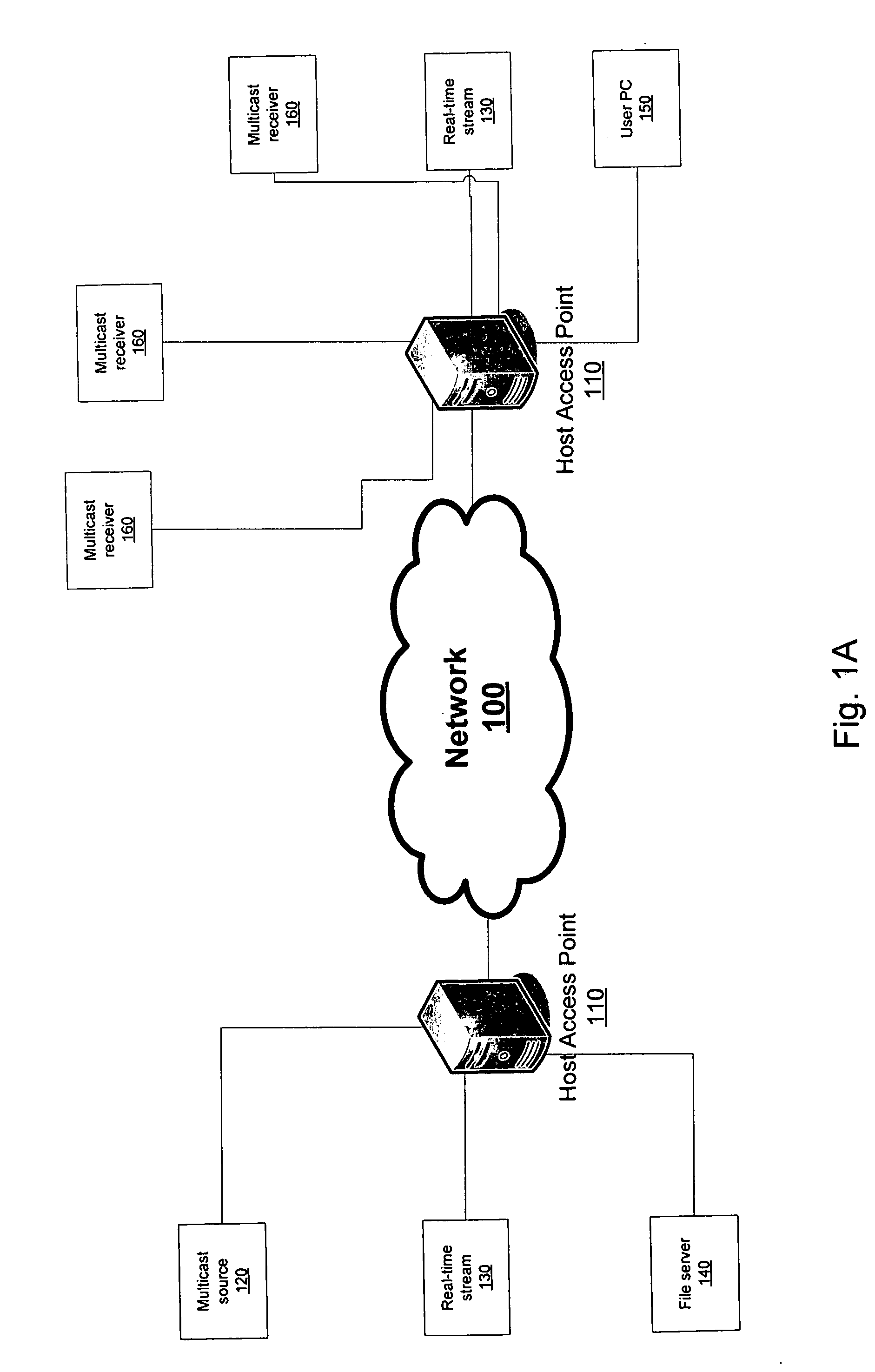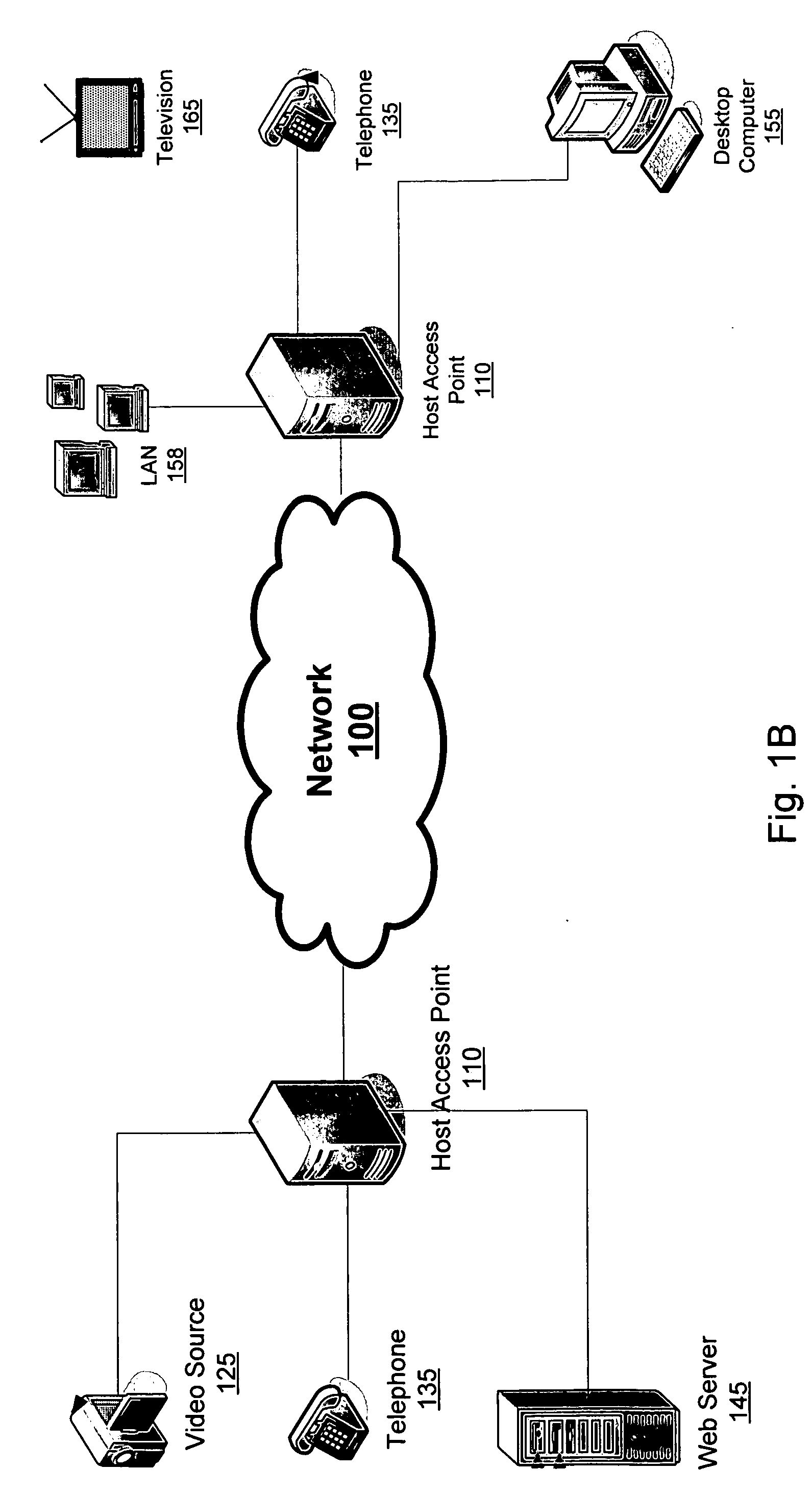Next generation network for providing diverse data types
a data processing network and network technology, applied in the field of new generation data processing networks, can solve the problems of unreliable datagram services, ip making almost no guarantees about packets, and internet may likely not be able to handle the data load that the distribution of television would place on the internet, etc., to achieve media convergence and transport with quality services
- Summary
- Abstract
- Description
- Claims
- Application Information
AI Technical Summary
Benefits of technology
Problems solved by technology
Method used
Image
Examples
Embodiment Construction
[0035] Reference will now be made in detail to various embodiments of the present invention, examples of which are illustrated in the accompanying drawings.
[0036] The present invention generally relates to the network 100 depicted in FIGS. 1A and 1B. The network 100 is homogeneous, in the sense that its internal nodes use the same protocols, and provides a data transport for different types of data, including real-time streamed data, multicast streamed data, and file data. All data is sent as a flow, and the requirements of the flow determine how it is treated within the network 100. The network 100 is capable of adapting dynamically to the different requirements of different kinds of data. This means that, for example, a television broadcast and a telephone call can travel over the same lines using the same routers even though the performance demands of both are quite different.
[0037] In order to ensure that quality of service demands are met for different types of data, the netw...
PUM
 Login to View More
Login to View More Abstract
Description
Claims
Application Information
 Login to View More
Login to View More - R&D
- Intellectual Property
- Life Sciences
- Materials
- Tech Scout
- Unparalleled Data Quality
- Higher Quality Content
- 60% Fewer Hallucinations
Browse by: Latest US Patents, China's latest patents, Technical Efficacy Thesaurus, Application Domain, Technology Topic, Popular Technical Reports.
© 2025 PatSnap. All rights reserved.Legal|Privacy policy|Modern Slavery Act Transparency Statement|Sitemap|About US| Contact US: help@patsnap.com



